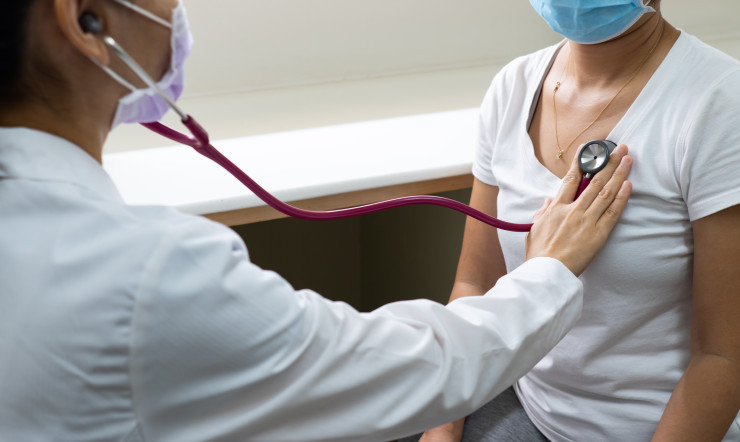Tengrinews.kz - A pulmonologist has warned Kazakhstanis about atypical signs of pneumonia. According to Akzharkyn Kaldybek, a specialist at the city clinical hospital No. 1 in Almaty, pneumonia can present itself as other illnesses.
It is noted that the risk of acute respiratory infections increases during the fall and winter periods.
 Photo:depositphotos.com
Photo:depositphotos.com
What atypical signs of pneumonia are currently present?
Pneumonia can manifest typically, starting with a cough and sputum production, accompanied by high fever, weakness, and shortness of breath. However, it can also present atypically, without fever, with headaches and muscle pain, or as a dry cough with sore throat. An unusual sign is chest pain resembling neuralgia. A patient may not have a fever and may cough, yet still have polisegmental pneumonia on an X-ray.
There are bacterial, fungal, and viral pneumonias, depending on the etiology of the pathogen. Currently, bacterial pneumonia is the most common.
What are the dangers of atypical pneumonia?
Against the backdrop of reduced immunity or chronic diseases, some individuals may not notice the development of pneumonia. Young people who ignore health issues may also overlook the illness. If a patient does not seek medical attention in the early stages, it can lead to complications such as abscessing or lobar pneumonia. Pneumonia can also be dangerous because it may not respond to antibiotics, especially if caused by fungi or viruses. It's important to establish the etiology of the pathogen, as this affects treatment.
Is this pneumonia related to the coronavirus?
Some cases of pneumonia are currently associated with new strains of the coronavirus and clinically resemble coronavirus infection. To confirm the etiology, PCR and serological tests are necessary.
Current pneumonia has a short incubation period, developing in just 3-4 days. Previously, the incubation period was at least 7-14 days, but now patients often present with polisegmental pneumonia and significant inflammatory processes at early stages.
What to do if there are signs of pneumonia?
At the first signs of ARVI, you should visit a clinic in your area. The doctor needs to determine whether it is acute bronchitis, pneumonia, or ARVI.
In the clinic, you will need to undergo an X-ray and take general clinical tests (blood tests, biochemical analysis, coagulation profile). The results of these tests will help assess the patient's condition and the spread of the inflammatory process. If necessary, the doctor will prescribe outpatient treatment, and for moderate to severe cases, the patient will be referred to a hospital.
Can pneumonia be treated at home on your own?
This decision is made by the doctor and depends on the extent of the inflammation. Segmental or focal pneumonia can be treated on an outpatient basis, but if the inflammation affects an entire lobe of the lung, it is dangerous. It is important to assess how many segments are involved in the inflammatory process, as there can be several segments within one lobe. If multiple segments are inflamed, hospitalization is required. In general, self-treatment is not advisable.
If diagnosed in a timely manner and therapy is started promptly, bacterial pneumonia can be effectively treated with positive outcomes.
Prepared by Ainash Ondiris.

